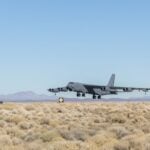
The U.S. Space Force is examining whether to move ahead on a possible program for Commercial and Military Satellite Communications Operations Support (COSMOS) for Space Operations Command and Schriever Space Force Base, Colo.'s Space Delta 8, which focuses on satellite communications. COSMOS would follow the Wideband Satellite Communications Operations and Technical Support II (WSOTS II) program. More than a year before the creation of the Space Force in December 2019, the U.S. Army awarded Harris–now part of L3Harris Technologies [LHX]–a nearly…














